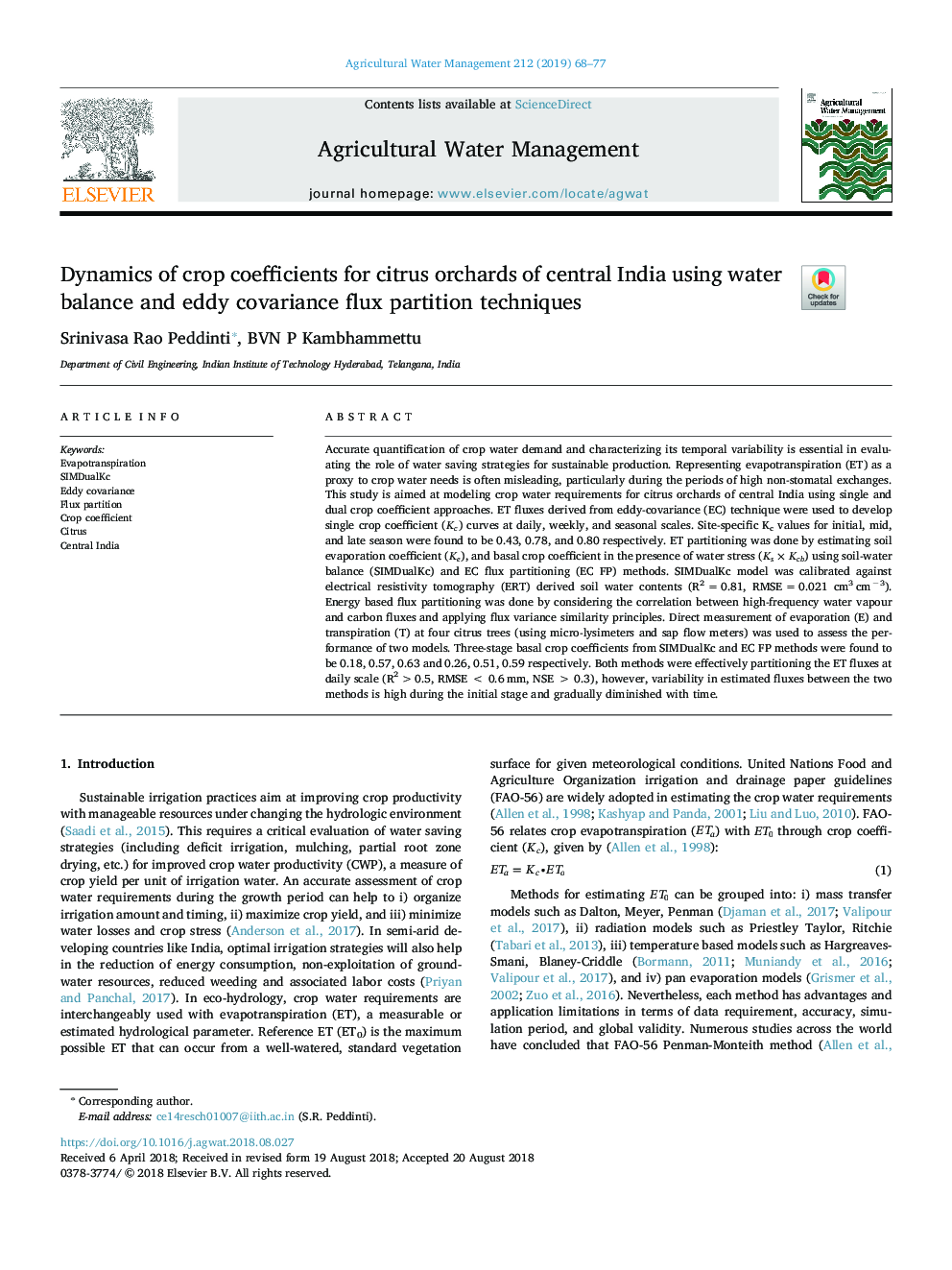| کد مقاله | کد نشریه | سال انتشار | مقاله انگلیسی | نسخه تمام متن |
|---|---|---|---|---|
| 10144757 | 1646309 | 2019 | 10 صفحه PDF | دانلود رایگان |
عنوان انگلیسی مقاله ISI
Dynamics of crop coefficients for citrus orchards of central India using water balance and eddy covariance flux partition techniques
ترجمه فارسی عنوان
دینامیک ضرایب محصول برای باغ های مرکبات هندوستان با استفاده از روش تعادل آب و کواریانس کوارتانس
دانلود مقاله + سفارش ترجمه
دانلود مقاله ISI انگلیسی
رایگان برای ایرانیان
کلمات کلیدی
موضوعات مرتبط
علوم زیستی و بیوفناوری
علوم کشاورزی و بیولوژیک
علوم زراعت و اصلاح نباتات
چکیده انگلیسی
Accurate quantification of crop water demand and characterizing its temporal variability is essential in evaluating the role of water saving strategies for sustainable production. Representing evapotranspiration (ET) as a proxy to crop water needs is often misleading, particularly during the periods of high non-stomatal exchanges. This study is aimed at modeling crop water requirements for citrus orchards of central India using single and dual crop coefficient approaches. ET fluxes derived from eddy-covariance (EC) technique were used to develop single crop coefficient (Kc) curves at daily, weekly, and seasonal scales. Site-specific Kc values for initial, mid, and late season were found to be 0.43, 0.78, and 0.80 respectively. ET partitioning was done by estimating soil evaporation coefficient (Ke), and basal crop coefficient in the presence of water stress (KsÃKcb) using soil-water balance (SIMDualKc) and EC flux partitioning (EC FP) methods. SIMDualKc model was calibrated against electrical resistivity tomography (ERT) derived soil water contents (R2â=â0.81, RMSEâ=â0.021 cm3âcmâ3). Energy based flux partitioning was done by considering the correlation between high-frequency water vapour and carbon fluxes and applying flux variance similarity principles. Direct measurement of evaporation (E) and transpiration (T) at four citrus trees (using micro-lysimeters and sap flow meters) was used to assess the performance of two models. Three-stage basal crop coefficients from SIMDualKc and EC FP methods were found to be 0.18, 0.57, 0.63 and 0.26, 0.51, 0.59 respectively. Both methods were effectively partitioning the ET fluxes at daily scale (R2 > 0.5, RMSEâ<â0.6âmm, NSEâ>â0.3), however, variability in estimated fluxes between the two methods is high during the initial stage and gradually diminished with time.
ناشر
Database: Elsevier - ScienceDirect (ساینس دایرکت)
Journal: Agricultural Water Management - Volume 212, 1 February 2019, Pages 68-77
Journal: Agricultural Water Management - Volume 212, 1 February 2019, Pages 68-77
نویسندگان
Srinivasa Rao Peddinti, BVN P Kambhammettu,
